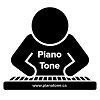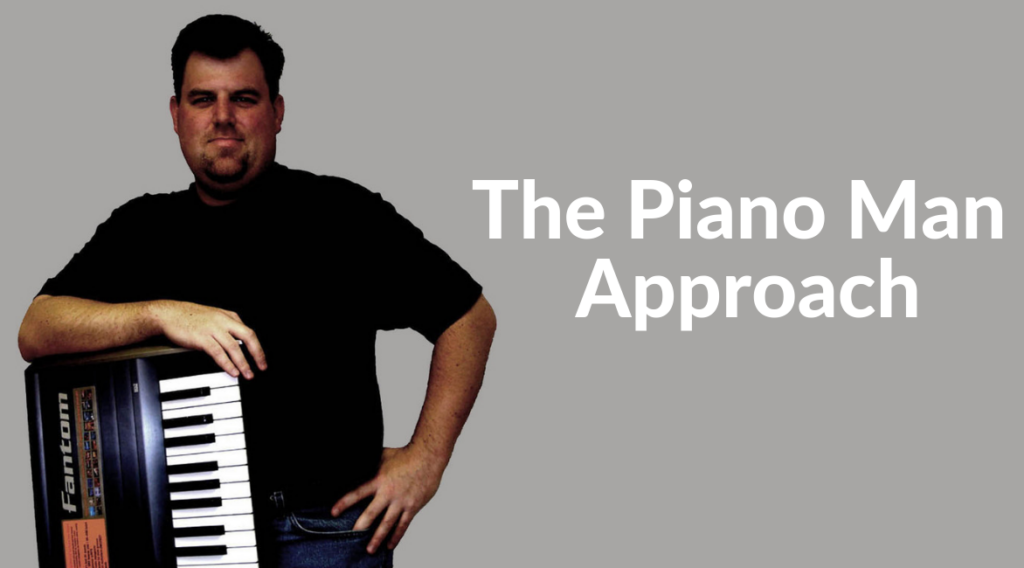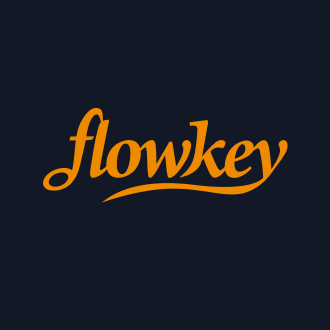This is my review on a VERY unique and interesting product – the Donner DDP-80 entry level digital piano. Ok so full disclosure before I get started – I did not buy this piano, Donner was nice enough to send it to me asking me to do a review. That being said, I DO promise to give you my honest opinion on the DDP-80.
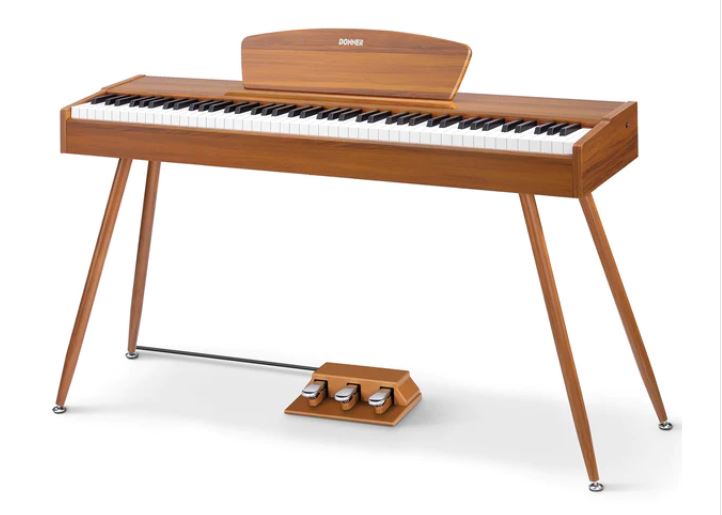
Who Is Donner
So who is Donner and why do they send product samples out to reviewers like myself? Well, if you’ve looked online or on Amazon for keyboards, digital pianos, guitars, drums or even ukuleles you have probably encountered Donner. Donner is an online only music equipment company that started out years ago making guitar pedals and accessories, and then branched out into all of these other products. As far as I know they do not sell their products in stores, only online – so since the public can’t try these out in stores, the only way for people to get any independent feedback is from reviewers like myself, so this is why Donner sends out sample products to be reviewed. Ok so enough background let’s get to the review, starting with a short unboxing.
Why Is The Donner DDP-80 So Unique?
Ok so why am I excited about reviewing the Donner DDP-80 and what makes it so unique? Well, with the DDP-80, Donner has created a digital piano that has a very simple feature set that actually has more in common with acoustic pianos, but then includes a couple of the very basic but . . . important advantages of a digital piano. As a result, the DDP-80 will strongly appeal to people who are ONLY interested in playing piano, without ANY bells, whistles or extra features. And it will even appeal to some people who are actually considering an acoustic piano, but for cost, size, portability and (or) noise level restrictions, they want an alternative to an acoustic piano.
Donner DDP-80 Assembly / Unboxing
The Donner DDP-80 does come with its own legs so there is some assembly required, but it is REALLY quick and easy. You simply screw in the metal legs, and then attach the music rest by sliding it in and tightening the bolts Here is a quick video:
Donner DDP-80: The Summary
The Keys
88 fully weighted graded hammer action keys; matte finish on the black keys and a VERY subtle finish on the white keys
The Voices
ONE voice: PIANO! 128 notes of polyphony
The Effects
There are no adjustable effects, not even reverb
Connectivity
1/4″ headphone port, 1/4″ (summed mono) line out port, USB to host port, generic 1/4″ sustain pedal input, proprietary triple pedal input (portable triple pedal unit is included!)
The Rest
- Very unique and attractive wood-like appearance, with a nice large wooden music rest and removable metal legs (with a wood-like veneer)
- 40 watts of speaker power! (20 watts per side) facing down
- Free Donner music learning app is available with piano lessons for multiple skill levels
Donner DDP-80 Review – The Details

Wood-Like Appearance
I don’t typically talk about a piano or keyboard’s appearance, but in the case of the Donner DDP-80; I have to – this is a beautiful instrument! I don’t think it’s made out of real hardwood or anything, not at THIS price, but it does have a beautiful smooth wood like finish, and it comes with it’s own removable legs which are metal with some type of wood like finish on them. And the music rest not only looks good but is very functional, and nicely holds music books or a tablet; and I think the music rest might actually be real wood. So while you can get digital pianos that are meant to look like upright acoustics, they do cost quite a bit more than the DDP80 – in the DDP80’s entry level price range of about $630 USD, digital pianos will pretty much all be the black plastic “slab” style keyboards.
And, just like an acoustic piano, there are no visible buttons, screens, dials or ports – so at first glance, to someone who might not know any better, this COULD actually be mistaken for an acoustic piano, especially with the wooden finish.
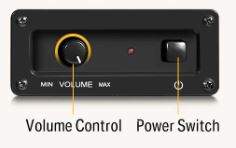
User Interface
Ok so the user interface – well – that’s easy! It consists of an on/off button and a volume button, both located on the back. At first, I thought that’s kind of inconvenient, but given that the whole point of this piano is to mimic an acoustic piano, I really don’t mind – and I found I’m rarely needing to adjust the volume anyways. I can reach over to the power easily once memorizing where it is, but if you wanted you could plug the piano in to a power bar with a switch and turn it on and off that way. And a nice feature given where the power button is – the piano will turn off on its own if you leave it idle for 15 minutes or so.

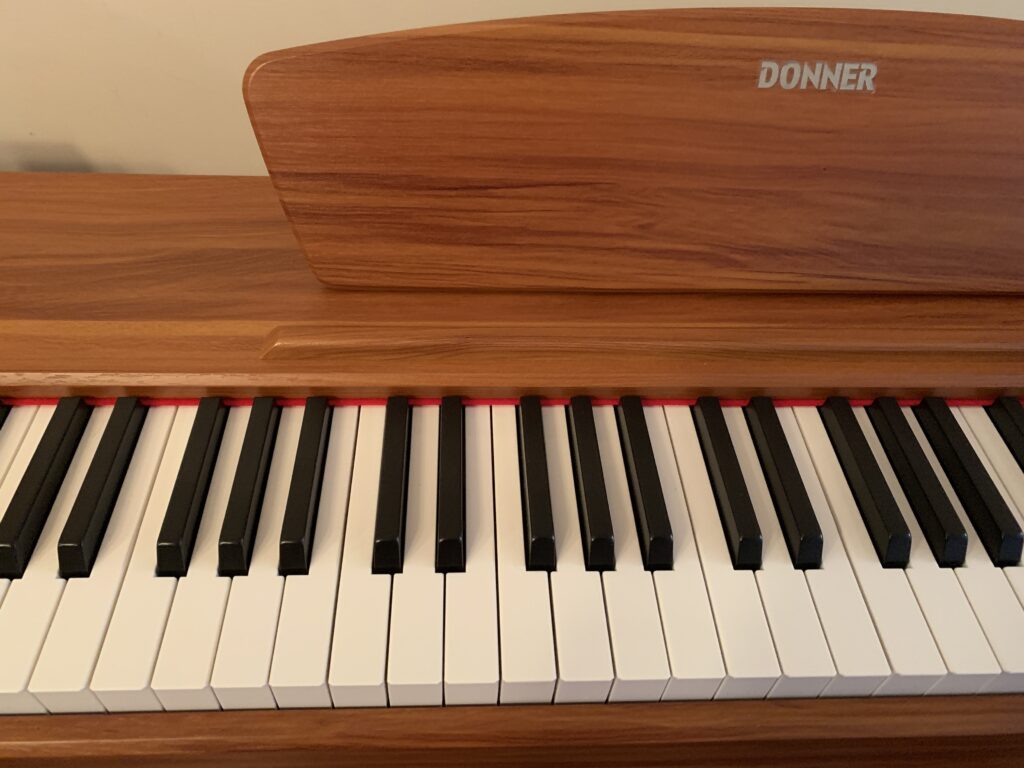
The Keys
The Donner DDP-80 has 88 full size keys, and in trying to accurately mimic the feel of a real piano, these keys are fully weighted and graded hammer action keys, so they are heavier in the bass range and lighter as you move up the keyboard. The action is a dual sensor action, and while I’m not at ALL an expert on key actions, I would be willing to bet, looking at the depth of the case, that the DDP-80 might have a longer pivot point than some entry level digital pianos, because the keys don’t seem to feel THAT much heavier as you play up the key, which CAN be an issue with pianos that have shorter pivot points.

The black keys have a subtle matte finish on them, and while the white keys at first look to be shiny smooth plastic, they have a REALLY subtle matte finish as well – so while they are nowhere near the finish you will see on a Roland FP series or a Casio PXS series, they are just a tiny bit less “smooth and shiny” than the keys on a Yamaha P45 or P125. And there is a nice red felt liner that helps keep dust out of the mechanism, reduces key noise a bit; and also looks good.
So how do the keys feel? Well to me, they feel heavy but really pretty good and . . . quite realistic. I personally have always preferred lighter key actions like the Casio Privia PX-S series of digital pianos, and more recently I have even started to move towards playing unweighted synth action keys. So while they feel heavy to me, those of you that like heavier actions like the Roland PHA4 action or the Yamaha P515 piano’s action, or the action on many acoustic pianos, you will feel quite at home with the DDP-80. And as I’ve gotten more used to playing them, there is a pretty decent dynamic range available. And on that note, are you wondering how many levels of touch sensitivity the DDP-80 has? Well . . . how many levels does an acoustic piano have? ONE! And so does the DDP-80; just like an acoustic piano, you can’t adjust the touch response.
And an interesting fact I’d like to mention – I just came back from holidays in Europe and a hotel I spent 5 days in had a Yamaha upright acoustic piano, so I had been playing that daily right before coming home to check out the Donner, and the DDP-80 felt very similar.
So overall, how does this action compare to other entry level digital piano actions? Well, in comparing the DDP-80 action to the “Big 3: Roland, Yamaha and Casio, keep in mind that all of their actions will be found in pianos that are more expensive than the Donner:
– Roland PHA4 (Roland FP-10, FP-30x): I think it has a similar weight, but since this is only a dual sensor, the Roland triple sensor action with escapement, will still be a much more realistic action
– Yamaha GHS (Yamaha P45, P125 and DGX670): The DDP-80 action feels heavier than the dual sensor GHS action in these Yamahas; as far as which one feels better or is more realistic? I’d have to have them side by side to say for sure, but they are both very good actions. I do have to admit though that the Yamaha GHS is of a noticeably higher build quality (it’s super solid)
– Casio Smart Scaled Hammer Action (PX-S Privia series): The DDP-80 is noticeably heavier than the PX-S series; while the Casio action is actually my personal favorite, it is quite light – I think I can safely say the DDP-80 action would be a closer approximation of an acoustic piano action than the Casio
In comparing the DDP-80 action to competitors more in its own price range like the Alesis Recital Pro, Alesis Prestige or iNovus i88? I think the Donner DDP-80 action definitely outshines all 3 of those.
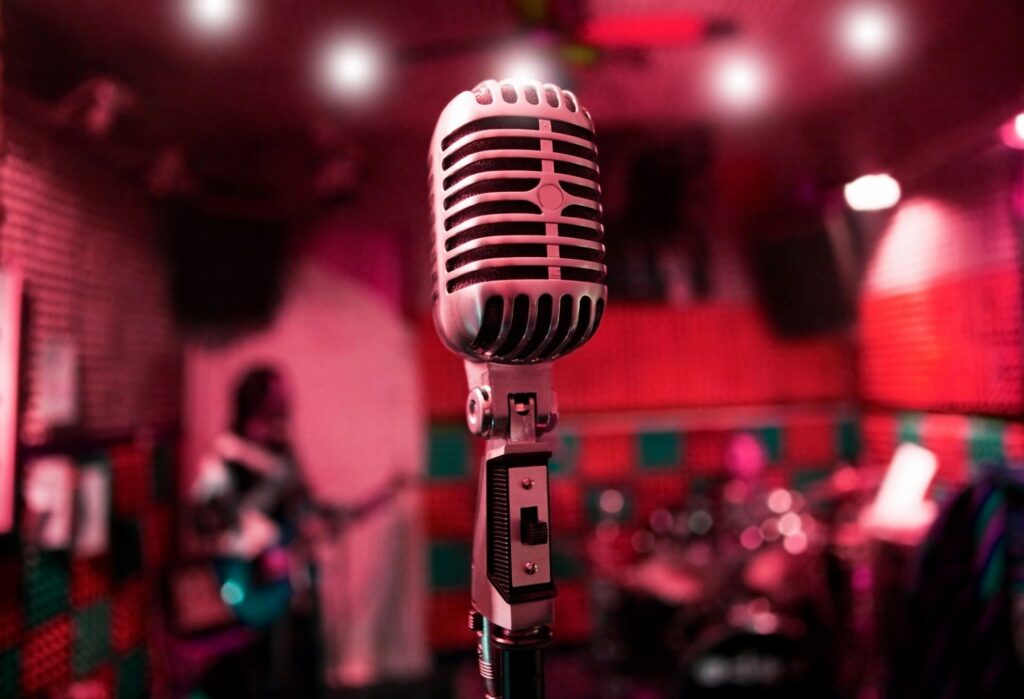
The Voice(s)
This is REALLY where the DDP-80 gets super unique AND super interesting; once again, just like an acoustic piano – the DDP-80 has ONE sound – PIANO. It doesn’t have grand piano, bright piano, mellow piano, electric piano, strings, etc – just PIANO. So for people who just want to play piano, this is kind of cool; you don’t have 20, 60 or 800 sounds to distract you from your piano playing. And since there is only one sound, that pretty much tells you that, just like an acoustic piano, there are no layering features or splitting features on the DDP-80.
So how does it sound? The sound samples are from a French company called Dream that has been making digital samples since the 1980’s; the samples used for the DDP-80 are from a French grand piano.
Some Notes On Polyphony / Sound Quality
The Donner DDP-80 has 128 notes of polyphony; and while this is already quite good for the price range, I want to talk about how polyphony plays a big role with the DDP-80 because it only has one sound.
So just in case you don’t know what polyphony is, in very simplified terms it refers to how many unique sound samples a keyboard sound chip can make at once. So you might think – I have 10 fingers, so 10 polyphony should be enough right? Well not quite; if your keyboard has layering and splitting voice options, then your 10 fingers could suddenly be using 30 notes of polyphony – and if there are rhythms and accompaniment, then each instrument part can eat up even more polyphony. And if you have sustained some notes that can also use up polyphony, as can effects and DSP. And keep in mind that the manufacturer may even be using more than a single sample for a single voice to thicken it which also requires more polyphony.
When there is only one sound, no layers, splits, rhythms and accompaniment, or effects or DSP to worry about, this allows Donner to maximize the use of their polyphony and their processing to trigger multiple samples at a time to thicken up and improve their piano sound.
Now I don’t have any specs or facts that they HAVE done this, but after playing the DDP-80 for a couple of weeks, I’m pretty sure they have done exactly that.
About a year ago or so I reviewed the iNovus i88 piano which uses the same voice samples from the same French “dream” company that Donner uses; and the iNovus i88 is very similar to the Donner DEP-20 piano, in that they both have HUNDREDS of sounds, splitting, layering as well as rhythms and accompaniment. So even though the iNovus and the Donner DEP-20 use the same core piano sample as the DDP-80 does, the DDP-80 piano sample sounds MASSIVELY better than the sample on the iNovus; it is a much fuller sounding sample, with clearer and stronger bass in the low end, and clearer and more natural sounding mid and high end notes as well. The decay is longer and more natural, and the dynamic range is considerably bigger. And all of this is because I’m pretty sure they are taking advantage of all this available polyphony and processing power to really thicken up the piano sound on the DDP-80.
I have to say I am really impressed with the piano sample on the Donner DDP-80; I think they’ve done a really good job with this sample. I’m thinking I’d like to try and rent a Yamaha P-45 or even a P-125 to see how the Donner piano voice holds up. And I will be comparing this voice to the piano sample on my new Yamaha PSR-EW425 keyboard as well.
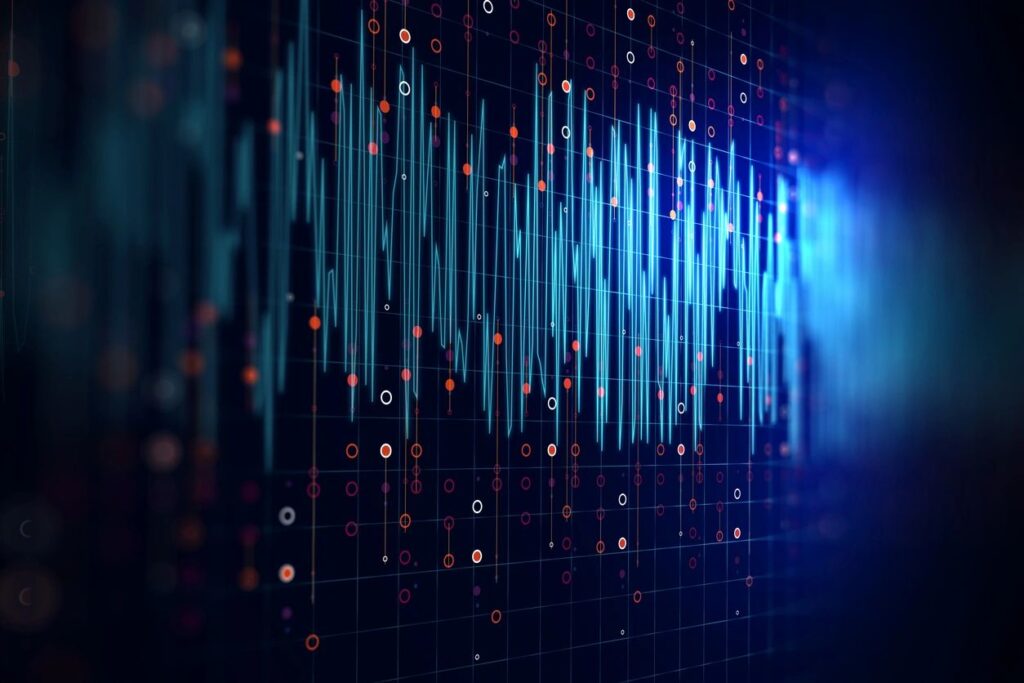
Effects / DSP, Rhythms & Accompaniment
What about effects or DSP? Well … does an acoustic piano come with reverb and chorus? Nope – neither does the Donner DDP-80; there are NO adjustable effects or DSP of any kind available, not even reverb.
What about rhythms or accompaniment? You guessed it, there are no rhythms or accompaniment (there isn’t even a metronome – this is probably the only digital keyboard on the MARKET without a metronome)
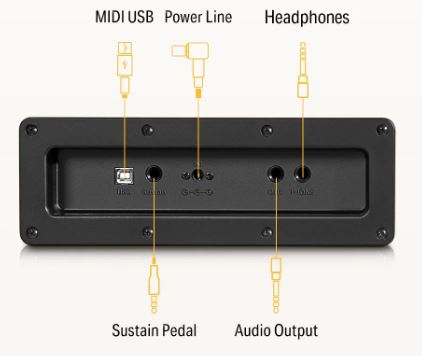
Connectivity

On the back, there is:
- 1/4” headphone port
- 1/4” line out:
- this is for connecting to external audio equipment like amps or PA systems. The headphone port is of course stereo, and the line out is a mono port that has a summed left and right signal. This is the same as keyboards that have TWO line out ports, one left (labelled “L/Mono”) and one right (labelled “Right”). With those ports, if you only use the L/Mono port you get a combined left and right mono signal, which is what you would typically use to connect to external amplification. And the nice thing about having this port included is that you still get the benefit of hearing the built in speakers when you are using this port to connect to external amplification, so you still have the benefit of the 40 watts of built in speaker power.
- USB to host port for connecting to a device like an iPad to transmit MIDI data to apps or software. This port does only send MIDI data (it would have been very cool if Donner could have done what Yamaha does on almost all their products, and that is include AUDIO in this port; you can’t have everything though).
- 1/4″ generic sustain pedal port (if you’d like to just use a generic sustain pedal as opposed to the included triple pedal unit); the included triple pedal connects to a separate port on the bottom of the piano. Even though I never use the soft and sostenudo pedals myself, I do quite like the feel of the included sustain pedal, and even though it’s bigger than a standalone sustain pedal, it’s still totally portable if you want.
What’s Missing?
The one thing I REALLY wish Donner had included is an auxiliary in port so you could connect a device like an iPad and play along with YouTube videos, or online piano courses. After all this IS an entry level piano, and is aimed mostly at beginner to intermediate level piano players, so easy access to online piano training would be a big benefit. But, you can easily accomplish that with a basic mixer, or with my new OneOdio headphones which actually have 2 inputs; one from my piano, and one from my iPad.
Donner DDP-80: The Other Features
Music App: Donner also offers a music app; I was going to look at it in a bit more detail, then I noticed that the app appears to be free without a piano purchase, so you should be able to download it from the app store and check it out for yourself. It’s pretty cool, there are lessons for bass, guitar, electric guitar, music production, ukulele and then for piano there are lessons for beginners, intermediate and advanced players. There are some tools like a metronome, chord charts, etc and there is also an online community area.
Speakers: For speakers, Donner has included 2 x 20 watt downward facing speakers for 40 watts total, and these sound REALLY good. While you will always sound better with additional amplification, you could easily get away with playing a small venue like a café with just these speakers. They have a lot more power and are MUCH more full sounding than the Yamaha P-125 or P-45, and the Casio Privia series. The Roland FP-30x speakers come closer, also with downward facing speakers that have decent bass and 22 watts total power, but the Donner DDP-80 speakers I think are also benefitting from being housed in a wood-like body as opposed to plastic. It’s still not like the natural reverberation you get from an acoustic piano, but it is a noticeable improvement on a plastic case. Here is a short video demoing the speakers as picked up by my iPhone’s built in mic – I live in an apartment and the speakers are only at about 60% in this video.
The Other Choices
This is normally where I would start talking about very similar products from competitors like Roland, Yamaha, Casio and others; but the Donner DDP-80 is so unique, it doesn’t really have a DIRECT competitor in my eyes. So I’m going to make 3 comparisons here:
Donner DDP-80 ($630 USD) vs. Acoustic Upright Pianos (Way More USD 😉
For someone who is looking for a basic acoustic piano, the DDP-80 is an option that offers a lot of similarities like a good piano sound, a realistic action, a lot of deep & resonant very full volume, it’s easy to use since it just has an on switch, and it’s an attractive piece of furniture – and then you also get the basic benefits of a digital piano, like a volume control, the ability to play with headphones, and the ability to connect to a device and transmit MIDI data.
Donner DDP-80 ($630 USD) vs. Yamaha P-45/71 ($680 USD)
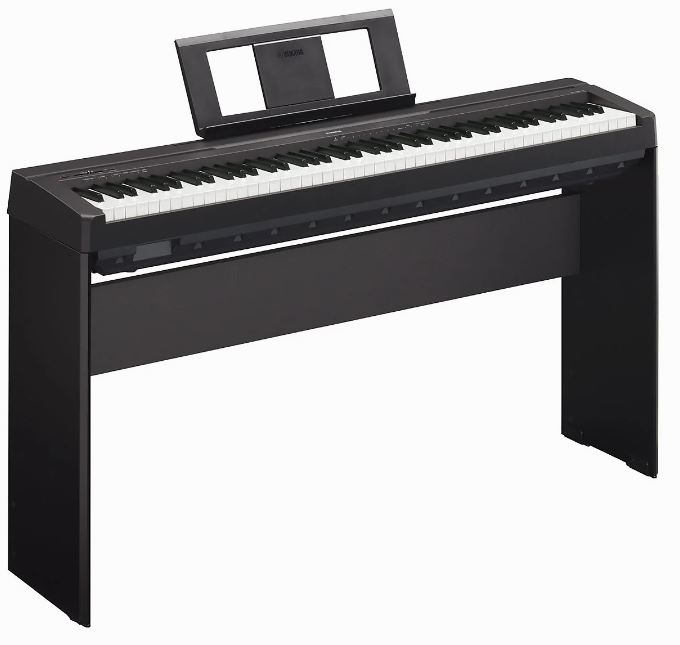
The closest digital piano competitor in my eyes would be the Yamaha P-45/71 (with the matching wooden stand). The Yamaha P-45 with the stand, only sells for about $50 USD more than the Donner DDP-80. The reason I chose the P-45 is that the price is close, and the P-45 is also fairly basic in terms of overall features. And, the P-45 has been a very popular entry level choice for years now, especially for people who are mostly just wanting a fully weighted, graded hammer action piano with a good piano sample.
So while the P-45 IS a Yamaha, and Yamaha is an amazing brand, and the P-45 does have 10 voices as opposed to Donner’s single voice; the Donner DDP-80 actually outshines the P-45 in a number of areas: it has FAR more powerful and better sounding speakers (at 40 watts vs. 12), it has a line out port for connecting to external amplification – with the P-45 you have to use the headphone port which would disable the internal speakers, and the DDP-80 has 128 polyphony vs the P-45’s 64. The DDP-80 INCLUDES a triple pedal unit; the P-45 has no option for a triple pedal.
As far as which piano sample is better, I would have to compare them side by side, but . . . given that the P-45 uses Yamaha’s older AWM engine and that Donner has REALLY thickened and enhanced the piano sound on the DDP-80 I would not be at all surprised if I preferred the piano sample on the Donner after hearing them side by side.
And as far as the action goes, they are both dual sensor actions and realistic, but the Donner will be a heavier action – which one you prefer depends on whether you prefer a heavier or a lighter action. And the DDP-80 has this VERY unique and eye-catching appearance, which . . . maybe matters to you and maybe does not.
Donner DDP-80 ($630 USD) Vs. Competitors In Its Price Range
Options more in the DDP-80’s price range would include pianos like the Alesis Recital Pro, Alesis Prestige, Donner DEP-20 or iNovus i88. I think the DDP-80’s piano sample and action are above these pianos; so this decision would basically come down to whether or not you are ok with only one piano sound and the minimalist functionality without rhythms, menus, effects etc., and once again whether or not the appearance matters to you.
Donner DDP-80: The Verdict

So the final verdict on the Donner DDP-80? I really like this piano, I think Donner has come up with a very cool and unique product here. It has a great piano sound, good action, great speakers and it looks fantastic. And while it is heavier than a slab style piano, the legs are removable so you COULD still definitely use this in a performance given the powerful speakers and available line out – and it would look pretty cool on a stage.
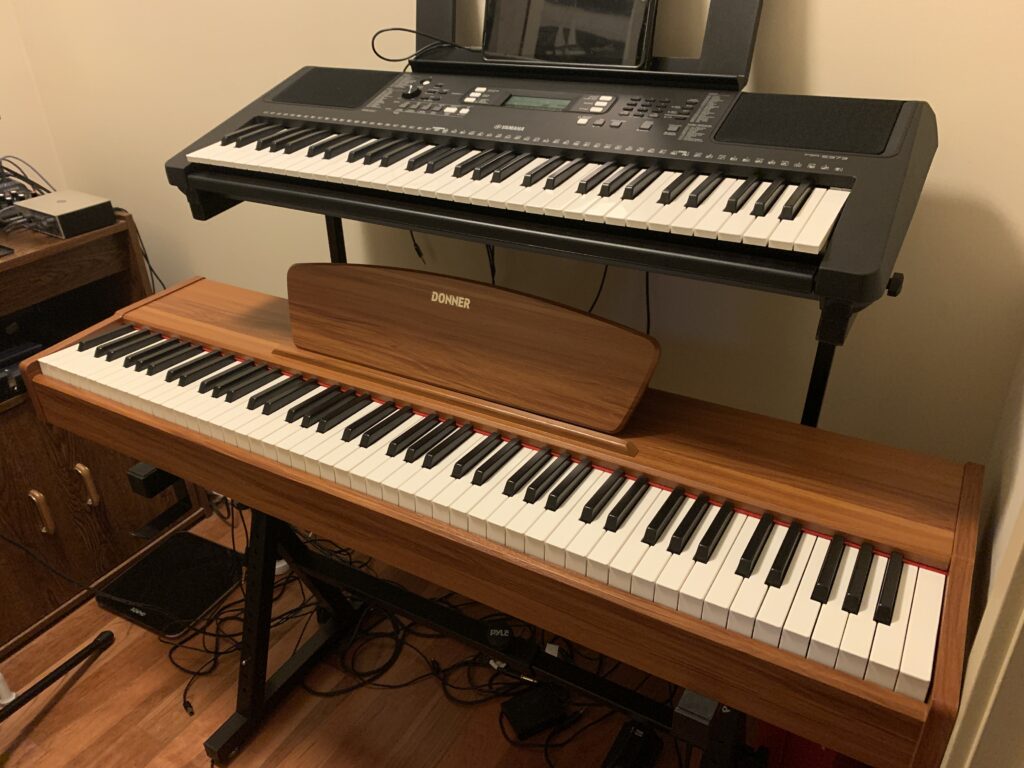
If you are a piano purist that is only concerned with playing piano without all the bells and whistles, and you are looking for a an attractive furniture style piano with a good piano sound, decent action and great speakers, then I think the Donner DDP-80 is a great option. It’s almost like a basic acoustic piano with the most important advantages of a digital.
So I’ve included Donner’s Amazon link to check out the DDP-80 online; I’ve also included a link to my shorter initial reaction review if you want to check that out, as well as links to my recommended online piano courses.
Thanks so much, and happy piano playing! (and piano shopping 😉 )
Current Prices On The Donner DDP-80
If you have any questions about my experience with the Donner DDP-80 please feel free to contact me!
Piano Training I Recommend
If you are looking for an app or a course to get started on learning piano, I would highly recommend checking out either the flowkey app (there is a free version with limited functionality you can check out by following my affiliate link below), or one of the online courses I took (one I’m still taking) and had tons of success with: Piano in 21 Days, The Piano Man Approach & Pianoforall.
Video Versions Of This Review
Here are links to 2 video versions of this review – there is an initial reaction version & a full comprehensive version if you want to check them out:
